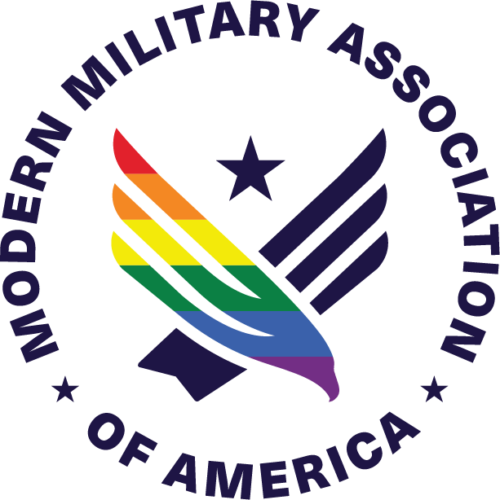Being the child of a service member comes with unique challenges; constant moves, feelings of isolation, saying goodbye to friends and making new ones again and again. But for those growing up in LGBTQ+ military families or as LGBTQ+ military youth, those challenges can feel even heavier.
As the LGBTQ+ military community continues to fight for recognition and equality, so, too, do the young people who call this community home. These youth — whether the military child ofLGBTQ+ parents or LGBTQ+ themselves — are a testament to resilience, pride, and strength. In this current climate, they especially need all of us to stand up for them; here’s how we can do that.
The Numbers Behind the Journey
Among the 1.6 million military dependents between the ages of 0 and 22, it is estimated there are over 50,000 LGBTQ+ young people currently navigating life in military families, with an estimated 10,000 of them identifying as transgender or gender diverse. Additionally, a recent Gallup poll found that a growing number of Americans in all age groups self-identify as LGBTQ+, with a staggering 23.1% of Gen Z (those born 1997-2006) belonging to the community.
This significant population reflects the broader shift towards more acceptance and visibility of LGBTQ+ individuals in society and military communities. It also highlights their complex challenges due to shifting political landscapes and state-level laws targeting the LGBTQ+ community — even though it defies public opinion.
There is another layer to these numbers. Many are children of LGBTQ+ service members who face not only the standard challenges of military life but the added burden of moving to places where their family may be misunderstood or mistreated. It’s crucial to recognize the unique needs of these young people and offer support both in and out of uniform.
Growing Up in the Military: Unique Challenges for LGBTQ+ Youth and Children of LGBTQ+ Parents
Some characteristics of military life, including frequent moves and no choice in where one lives, are already tough for children of service members. But for children of LGBTQ+ parents and LGBTQ+ youth, those challenges are often amplified.
When military families are assigned to states with fewer LGBTQ+ protections or where they or their parents’ sexual orientation or gender identity is not accepted, the impact on the family dynamic can be significant.
Military bases are often located in less progressive areas. In fact, more than half (53%) of all active duty service members in the U.S. are stationed in states with anti-LGBTQ+ laws or policies in place, including healthcare bans, facility restrictions, and sports bans.
In these environments, children of LGBTQ+ parents may be exposed to harmful stereotypes, exclusion, and even bullying at school. They may also feel the weight of societal pressure to hide their family’s sexual orientation or gender identity for fear of retaliation or rejection.
For LGBTQ+ military youth, they might live in a state where they face barriers to medical care and social acceptance. The added layer of navigating their gender identity or sexual orientation in a military context can amplify feelings of isolation and confusion.
Navigating the Challenges: Healthcare and Policy Impact
As we look ahead to future legislative decisions, it’s important to understand the potential impact on military families, particularly LGBTQ+ families — particularly with the FY2025 National Defense Authorization Act (NDAA) that passed last year and the upcoming legislative planning for the FY2026 NDAA,
The proposed legislation could severely restrict access to life-saving medical care, such as gender-affirming care, for transgender military youth. This provision threatens not only the health and well-being of these young people but also the readiness and retention of our military families.
LGBTQ+ military families — like all military families — make immense sacrifices. The promise of accessible, comprehensive healthcare for their children should be a part of the commitment made to those who serve our country. Unfortunately, many states have implemented laws that complicate access to healthcare, particularly for LGBTQ+ youth. Over 47% of military families live in states with healthcare bans, making it more challenging for these families to access the care their children need.
This is where the importance of medical continuity comes in. Service members who have children seeking gender-affirming care are particularly at risk, as any disruption in care could have profound, destabilizing effects on their children’s mental health. It’s not just a matter of policy — it’s about ensuring that these young people have the same opportunity to thrive and succeed as their peers.
A Bright Future Ahead: Building a Stronger, More Inclusive Military Community Together
Despite these challenges, the resilience of LGBTQ+ military youth continues to shine through. These young people are part of a vibrant and diverse community that is helping to reshape the future of our military. They are determined to forge their own paths, and many of them are already leading efforts to increase inclusivity and visibility for LGBTQ+ individuals within the military.
There are a few options for families facing a challenging move, and you can learn more about them in our small group meetings like MilPride and Strong Communities. It’s also essential that we continue to support LGBTQ+ military children in their journey, not just through policies that protect their rights, but by fostering environments of acceptance and pride. This includes advocating for comprehensive healthcare access, fighting against harmful discriminatory laws, and ensuring that every military family, regardless of their gender identity or sexual orientation, has the resources they need to thrive.
As we look toward the future, we must continue to advocate for all military youth, including those who are part of LGBTQ+ families or who identify as LGBTQ+ themselves. It’s critical that we not only support the immediate needs of these families but also stand up for policies that protect their rights and promote their well-being.
With over 50,000 LGBTQ+ military youth, we are witnessing the growing power of this community — one that, despite the hurdles they face, will continue to stand tall and proud. Together, we can work toward a future where every LGBTQ+ military youth feels supported, safe, and celebrated.
The Power of Visibility and Advocacy
LGBTQ+ military youth are not only our future leaders, educators, and advocates, but also our future service members. Anywhere from 30-44% of active duty service members come from families with at least one military-affiliated relative. They are growing up in a time of change, where acceptance and understanding are on the rise, but they still need our support. By ensuring they have access to the care they need, fighting for inclusive policies, and standing up against discrimination, we can help build a future where all LGBTQ+ military youth can live with pride, confidence, and hope.
A Call to Action
As we celebrate the incredible resilience of LGBTQ+ military youth and military children of LGBTQ+ service members, we also challenge ourselves to advocate for change. We must ensure that they have the healthcare, support, and protection they deserve. Whether it’s through legislative action or community advocacy, let’s stand with them as they navigate their unique journeys.
Our LGBTQ+ military youth are not just surviving — they are thriving. And with our continued support, they will continue to lead the charge toward a more inclusive and accepting future for all military families.

